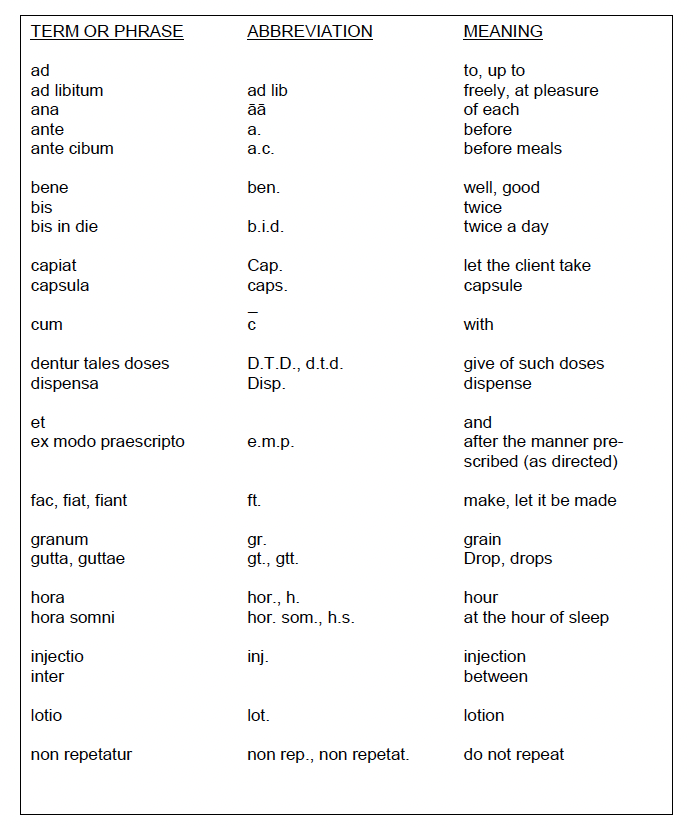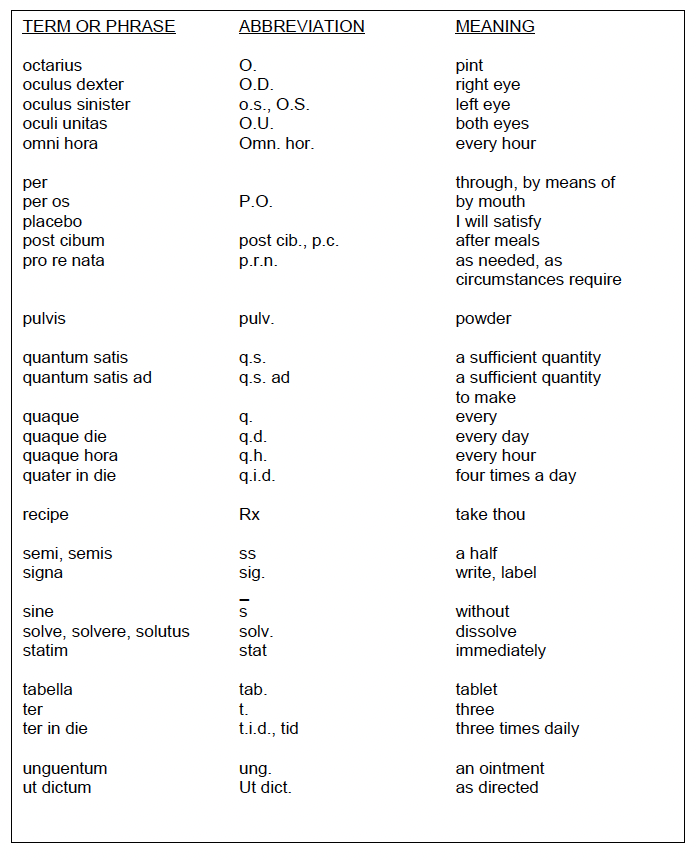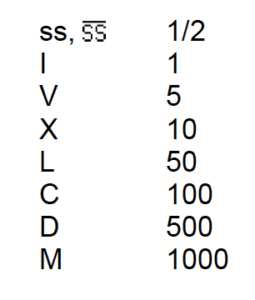CORRESPONDENCE COURSE
U.S. ARMY MEDICAL DEPARTMENT CENTER AND SCHOOL
SUBCOURSE MD0913 EDITION 100

The administration of drugs is one of the most important and exacting duties performed in caring for sick and injured patients. The appropriate drug given in the correct dosage will very often hasten a patient’s recovery. On the other hand, an inappropriate drug or dosage may worsen a patient’s condition or even result in his death.
The enlisted person charged with the administration of drugs is therefore faced with a grave responsibility, whether medical supervision is immediately available or not.
The purpose of this subcourse is to familiarize you with basic drugs that are standard for the U.S. Army. Discussion includes the actions, clinical uses, administration, untoward effects, cautions, and contraindications in the use of these drugs, as well as their forms of issue.
———————-
Download Here
Drug Dosage and Therapy
Length: 237 Pages
Estimated Hours to Complete: 16
Format: PDF file
Size: 2.4 MB
—————————-
Anyone may take this course. However, to receive credit hours, you must be officially enrolled and complete an examination furnished by the Nonresident Instruction Branch at Fort Sam Houston, Texas. Enrollment is normally limited to Department of Defense personnel. Others may apply for enrollment, but acceptance is not guaranteed.
TABLE OF CONTENTS
INTRODUCTION
1 DOSAGE CALCULATIONS
Section I. Interpreting Medical Orders
Section II. Ratio and Proportion
Section III. The Metric System
Section IV. The Apothecary System
Section V. Conversions
Section VI. Percentage Solutions
Section VII. Injection Dose Calculations
Section VIII. Pediatric Dose Calculations
Exercises
2 BASIC PHARMACOLOGY; ANTISEPTICS AND DISINFECTANTS; OTHER TOPICAL DRUGS; GASTROINTESTINAL AGENTS; RESPIRATORY DRUGS; LOCAL ANESTHETICS
Section I. Introduction to Pharmacology
Section II. Antiseptics and Disinfectants
Section III. Other Topical Drugs
Section IV. Antacids.
Section V. Cathartics
Section VI. Antidiarrheals
Section VII. Respiratory Drugs
Section VIII. Local Anesthetics
Exercises
3 CENTRAL NERVOUS SYSTEM DRUGS
Section I. The Central Nervous System.
Section II. Sedative-Hypnotics
Section III. Antipsychotic Tranquilizers and Related Antidepressants.
Section IV. Narcotic Analgesics 3
Section V. Nonaddictive Analgesics and Antipyretics.
Section VI. CNS Stimulants 3-
Exercises
4 AUTONOMIC AND CARDIOVASCULAR DRUGS
Section I. The Autonomic Nervous System
Section II. Anticholinergic (Parasympatholytic) Drugs
Section III. Adrenergic (Sympathomimetic) Drugs
Section IV. Vasodilator Drugs
Section V. Fluid and Electrolyte Therapy
Section VI. Antihistamines
Section VII. Other Agents
Exercises
5 DRUGS USED TO PREVENT AND TREAT INFECTION I
Section I. Microbiology
Section II. Biologicals (Immunizing Agents)
Section III. Penicillins and Cephalosporins; Erythromycin
Section IV. Tetracyclines
Exercise
6 DRUGS USED TO PREVENT AND TREAT INFECTION II
Section I. Aminoglycosides.
Section II. Sulfonamides
Section III. Antifungal Agents
Section IV. Antimalarial Drugs
Section V. Anthelmintic Drugs.
Section VI. Other Agents
Exercises
——————————————————-
Sample
LESSON ASSIGNMENT: LESSON 1 Dosage Calculations
LESSON ASSIGNMENT: Paragraphs 1-1 through 1-25
LESSON OBJECTIVES: After completing this lesson, you should be able to:
1-1 Interpret drug orders.
1-2 Convert units within the metric system.
1-3 Convert units between the apothecary and
metric systems.
1-4 Given the strength of a drug, calculate and
measure an injection dose.
1-5 Given an antibiotic or other drug in dry powder
form, dilute the vial with an appropriate diluent
and calculate the necessary volume dose.
1-6 Calculate pediatric doses, given the body weight
and either the dose per unit of body weight or
the dose per unit of surface area.
SUGGESTIONS If you need to review basic mathematics, it is
recommended that you enroll in Subcourse MD0900,
Basic Mathematics.
After studying this assignment, complete the exercises
at the end of this lesson. These exercises will help you
to achieve the lesson objectives.
——————————————————-
LESSON 1: DOSAGE CALCULATIONS
Section I. INTERPRETING MEDICAL ORDERS
1-1. COMMON MEDICAL ABBREVIATIONS
To calculate doses and administer drugs, you must be familiar with those abbreviations commonly used in medicine, especially those found in prescriptions and clients’ charts. Table 1-1 is a list of common Latin terms and abbreviations used in medicine. Tables 1-2 and 1-3 are summaries of common abbreviations used to indicate times of administration, routes of administration, and dosage forms. Tables 1-4 and 1-5 give symbols or abbreviations for different units of measure.






1-2. ROMAN NUMERALS
Roman numerals are used in writing prescriptions. They are used to specify the amounts of ingredients when the apothecary system is being used. They are used to specify the number of units (capsules, tablets, powders, suppositories, and so forth) to be dispensed; for example, “Dispxxiv.” And lastly, they are used in the signa or directions to the client. You should, therefore, be thoroughly familiar with the system of Roman numerals used in pharmacy. The basic symbols or numerals are:

These basic numerals may be combined to represent any number, and there are definite rules for the manner in which they are combined. Upper-case or lower-case letters may be used for Roman numerals. Prescribers usually prefer uppercase letters, but they dot the “I” for the sake of clarity. The rules for Roman numerals are as follows:
a. Fractions. Except for “ss” meaning one-half (1/2), all other fractions are represented by Arabic numerals (1/4, 3/8, 1/120, and so forth). (Note: The “ss” may be written with or without a bar–ss or .)
b. Repeating Numerals. Numerals may be repeated. When they are, the value of the number is repeated. Thus, iii or III is 3 (1+1+1), XXX is 30 (10+10+10), and CCC is 300 (100+100+100). Any numeral that would be the same as another when repeated is NOT repeated. For example, VV is NOT used for 10 (5+5) because X is 10 and LL is NOT used for 100 (50+50) because C = 100).
c. Smaller Numerals Before Larger. When a smaller numeral placed before a larger one, the smaller value is subtracted from the larger one. Only one number can be subtracted in this way. Thus, IV (5 – 1) = 4; IX (10 – 1) = 9; and XC (100 – 10) = 90 are correct, but 3 is never written IIV.
d. Smaller Numerals After Larger. A smaller numeral placed after a larger one is added to the larger number. For example, VIII = (5+3) = 8 ; XIII = (10+3) = 13; CLX = (100+50+10) = 160.
e. Smaller Numeral Between Two Larger. A smaller numeral between two larger ones is ALWAYS subtracted from the larger numeral which follows it as CXL (100 + [50-10]) = 140; MCMLXXVI (1000 + [1000-100] + 50 + 10 + 10 + 5 + 1) = 1976.
f. The Use of “j.” As a precaution against error, the last “i” may be replaced by a “j.” When this method is used, 3 would be written as iij.
g. Table of Roman Numerals. Table 1-6 shows examples of Roman numerals and their equivalents.
h. Number After Modified Noun. When a number expressed in Roman numerals is used to modify a noun, the number follows the noun. The noun is likely to be a unit of the apothecary system or a unit of dosage. For example, “gr ii” would be interpreted as “two grains” and “caps i” would mean “one capsule.”
